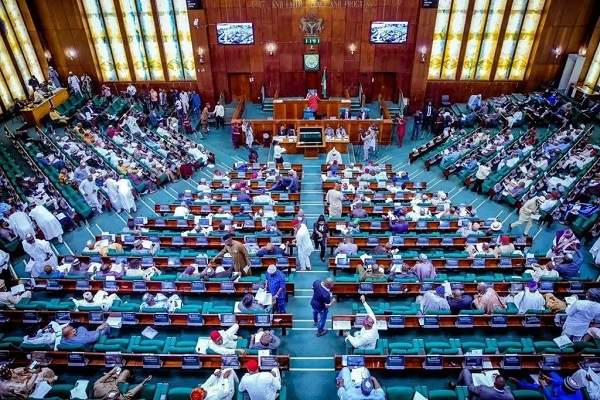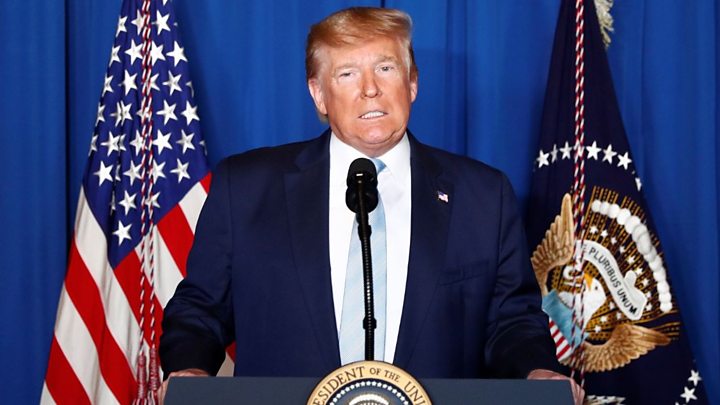…As South Korea signs deal to pay more for U.S. troops after Trump demand***
The Pentagon’s top official made an unannounced visit to Afghanistan on Monday to meet with U.S. commanders and Afghan leaders amid a push for peace with the Taliban.
Pat Shanahan, the recently installed acting secretary of defense, said he has no orders to reduce the U.S. troop presence, although officials say that is at the top of the Taliban’s list of demands in exploratory peace negotiations.
Shanahan said he is encouraged that President Donald Trump’s administration is exploring all possibilities for ending a 17-year war, the longest in American history.
But he stressed that peace terms are for the Afghans to decide. Thus far the Taliban have refused to negotiate with the government of President Ashraf Ghani, calling it illegitimate. Washington is trying to break that impasse.
“The Afghans have to decide what Afghanistan looks like. It’s not about the U.S., it’s about Afghanistan,” Shanahan told reporters traveling with him from Washington.
Zalmay Khalilzad, the administration’s special envoy for Afghan peace talks, said Friday that although talks are in an early stage, he hopes a deal can be made by July. That is when Afghanistan is scheduled to hold a presidential election.
Shanahan, a former Boeing executive who had never been in Afghanistan until Monday, was scheduled to meet with Ghani and other top government officials.
Shanahan took over as acting secretary of defense on Jan. 1 after Jim Mattis submitted his resignation in December. Shanahan had been Mattis’ No. 2.
Shanahan’s views on the Afghan war are not widely known. He said he would use this week’s visit to inform his thinking and to report back to Trump.
In testimony before Congress last week, Gen. Joseph Votel, the commander of U.S. Central Command, offered a largely optimistic view of Afghanistan, saying the current maneuvering between U.S. and Taliban negotiators is “our first real opportunity for peace and reconciliation since the war began.”
Votel noted that the Taliban are still capable of inflicting significant casualties on Afghan government forces. Just last week the insurgents killed some two dozen Afghan troops in an attack on an army base in northern Kunduz province.
In addition to battling the Taliban, U.S. and coalition forces in Afghanistan are focused on an Islamic State affiliate known as ISIS-Khorasan, comprised of foreign fighters largely from Pakistan. “Left unchecked,” Votel said in his report to Congress, ISIS-Khorasan “will continue to grow as a threat to our homeland.”
In his remarks to reporters during his flight to Kabul, Shanahan said that although the Islamic State presence in Syria “has been decimated,” local Syrian security forces are needed to ensure stability. He said IS still has a global presence.
“If something hasn’t been completely eradicated, there is a risk of it returning,” he said.
Trump has taken an ambivalent approach to Afghanistan, saying his instinct upon entering office in 2017 was to withdraw. Yet he chose instead to add about 3,500 troops in 2017-2018 to bolster the U.S. effort to train and advise Afghan forces. After Mattis resigned in December, Trump insisted that he had been unhappy with how Mattis handled Afghanistan. Since then, the administration has said it achieved a tentative “framework” for fuller peace negotiations with the Taliban.
“We do not know whether we will achieve an agreement,” Trump said in his State of the Union address to Congress last week, “but we do know that after two decades of war, the hour has come to at least try for peace.”
In the meantime, South Korea and the United States struck a new deal Sunday on how much Seoul should pay for the U.S. military presence on its soil, after previous rounds of failed negotiations caused worries about their decades-long alliance.
Last year, South Korea provided about $830 million, roughly 40 percent of the cost of the deployment of 28,500 U.S. soldiers whose presence is meant to deter aggression from North Korea. President Donald Trump has said South Korea should pay more.
On Sunday, chief negotiators from the two countries signed a new cost-sharing plan, which requires South Korea to pay about $924 million in 2019, Seoul’s Foreign Ministry said in a statement.
“We realize, the United States government realizes that Korea does a lot for our alliance and peace and stability in the region,” chief U.S. negotiator Timothy Betts said in Seoul. “We are very pleased our consultations resulted in agreement that will strengthen transparency and deepen our cooperation and the alliance.”
The allies had failed to reach a new cost-sharing plan during some 10 rounds of talks. A five-year 2014 deal that covered South Korea’s payment last year had expired at the end of 2018.
Unlike past agreements this one is scheduled to expire in a year, potentially forcing both sides back to the bargaining table within months.
“It has been a very long process, but ultimately a very successful process,” South Korean Foreign Minister Kang Kyung-wha said at a meeting before another official from the foreign ministry initialed the agreement.
While acknowledging lingering domestic criticism of the new deal and the need for parliamentary approval, Kang said the response had “been positive so far.”
Some conservatives in South Korea voiced concerns over a weakening alliance with the United States amid a stalemate in negotiations with North Korea to deprive it of its nuclear weapons. They said Trump might use the failed military cost-sharing negotiations as an excuse to pull back some of U.S. troops in South Korea, as a bargaining chip in talks with North Korean leader Kim Jong Un.
Trump told CBS’ “Face the Nation” last Sunday that he has no plans to withdraw troops from South Korea.
Trump announced last week that he will sit down with Kim for a second summit in Hanoi, Vietnam in late February. Their first summit in Singapore last June resulted in Kim’s vague commitment to “complete denuclearization of the Korean Peninsula,” a term that his propaganda machine previously used when it argued it would only denuclearize after the U.S. withdraws its troops from South Korea.
The U.S. military arrived in South Korea to disarm Japan, which colonized the Korean Peninsula from 1910-45, following its World War II defeat. Most U.S. troops were withdrawn in 1949 but they returned the next year to fight alongside South Korea in the 1950-53 Korean War.
South Korea began paying for the U.S. military deployment in the early 1990s, after rebuilding its war-devastated economy. The big U.S. military presence in South Korea is a symbol of the countries’ alliance, forged in blood during the war, but also a source of long-running anti-American sentiments.
ABC with additional report from NBC





















